Come for the world wonders. Stay for the alpacas. Peru’s got a magnetic pull that makes it pretty darn impossible to leave. In a single week, you could be conquering mountain passes high in the Andes, surfing along the vibrant Pacific Coast, and sweatily swatting at mosquitoes deep in the Amazon. A buzzin’ Latin nightlife scene, world-renowned gastronomy, and brightly-colored indigenous culture rounds out Peru as a complete travel destination.
What Peru lacks in… well, I can’t think of anything that Peru truly lacks. There’s just so much to do. Whether your stoke is the summit or a shopping spree in a colorful local market, Peru has got you covered. Check out these amazing things to do in Peru, and you’ll be itching for adventure and shouting “Al-paca my bags!”
Dive Headfirst into the Amazon Jungle in Iquitos

One of the craziest things about Peru is that it isn’t really known for its jungle. But get this, the Amazon Rainforest covers an inconceivable sixty percent of the country, more than any other country in South America. Deep in the Amazon, the city of Iquitos is only accessible by river or by air. Three muggy days of sleeping on a hammock on the deck of a boat is just a prelude of the adventures to come, as multi-day excursions into the Amazon are Iquitos’ main offerings.
Visit Kuelap Ruins: Home of the Cloud Warriors

Nestled remotely in the mountainous jungles of northern Peru are the ruins of Kuelap. A short cable car ride will take you high into the mountains where the mighty Warriors of the Clouds once ruled the land. With epic views and magnificent ruins, this Machu-Picchu-of-the-North is missing only one thing: the tourists. Come now to beat the crowds, just like the Inca beat the Chachapoya Empire to historical obscurity.
Do Go Chasing Waterfalls at Las Cataratas de Gocta

Why was TLC so against chasing waterfalls, anyway? Maybe they’d never seen Las Cataratas de Gocta, one of the tallest known waterfalls in the world. At 2,530 feet tall, you’ll get pretty out of breath chasing these ones, but it is worth the hunt. Deep in the Amazonas region, you’ll have to go on a six-hour trek to get to the basin of the waterfalls, an area that might be the greenest you ever lay eyes on. Keep an eye (or an ear) out for Howler monkeys. Their loud and unmistakable growls are what gave Gocta its name.
See the Mysterious Ventanillas de Otuzco
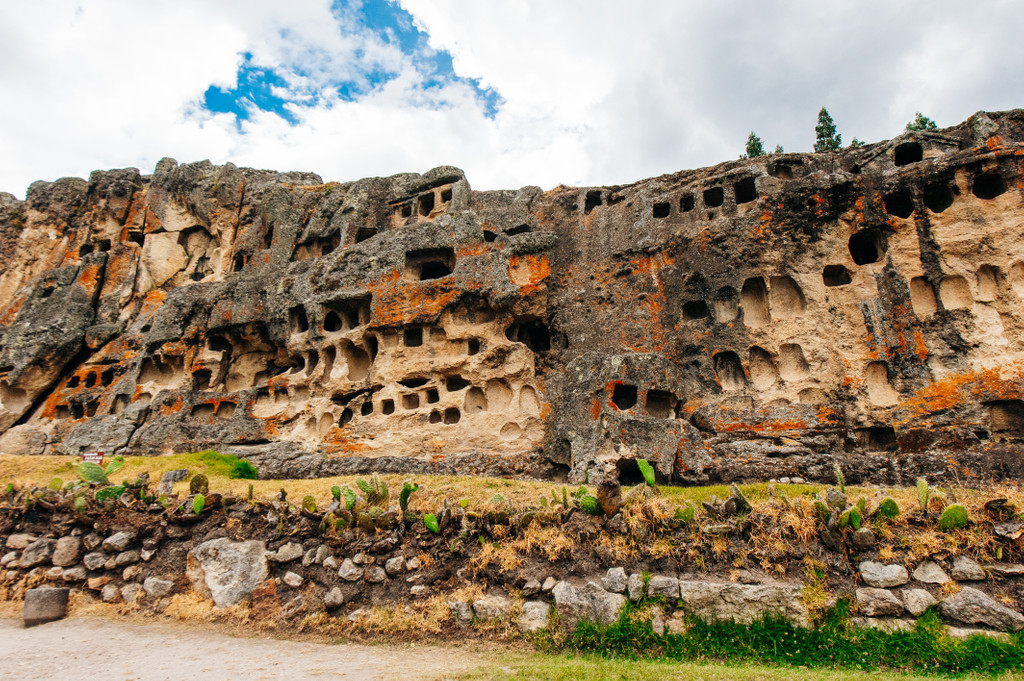
Outside of mere speculation, no one actually knows much about this mysterious necropolis. A quick ride from Cajamarca will get you to this small but fascinating archaeological site, whose name means “eaten by moths” due to its unique architectural style. Stop by and craft your own theories about these structures whose history has been eaten by time, and apparently moths.
Delve Into the Intriguing History of Cajamarca

Cajamarca is authentically Peru. Local markets spill out onto the streets as colectivos drive by whisking passengers to every corner of Cajamarca for the generous fee of a single Sol. A walk through Cajamarca transports you back to the colonial and the Incan eras. The brutal Spanish conquest of the Inca began in Cajamarca, where Francisco Pizarro and his conquistadors met Atahualpa, the last Sapa Inka. The room where Atahualpa was held for ransom can still be visited today, along with many other artifacts of this historic and cultural city.
Surf at the Birthplace of the Sport Itself: Huanchaco

2,500 years ago in the small coastal village of Huanchaco, surfing in Peru was born. The Caballitos de Totoro were reed fishing boats and one of the earliest known surfing vessels. Fishermen would paddle out to sea then ride the waves back with the catch of the day. The waves in Huanchaco are perfect for surfers of all levels. Alternatively, the coastline of Chicama about two hours away is famed for having among the longest surfable waves in the world, reaching lengths of 2-3 kilometers.
See A Different Side of Pre-Incan Peru at Chan Chan Ruins
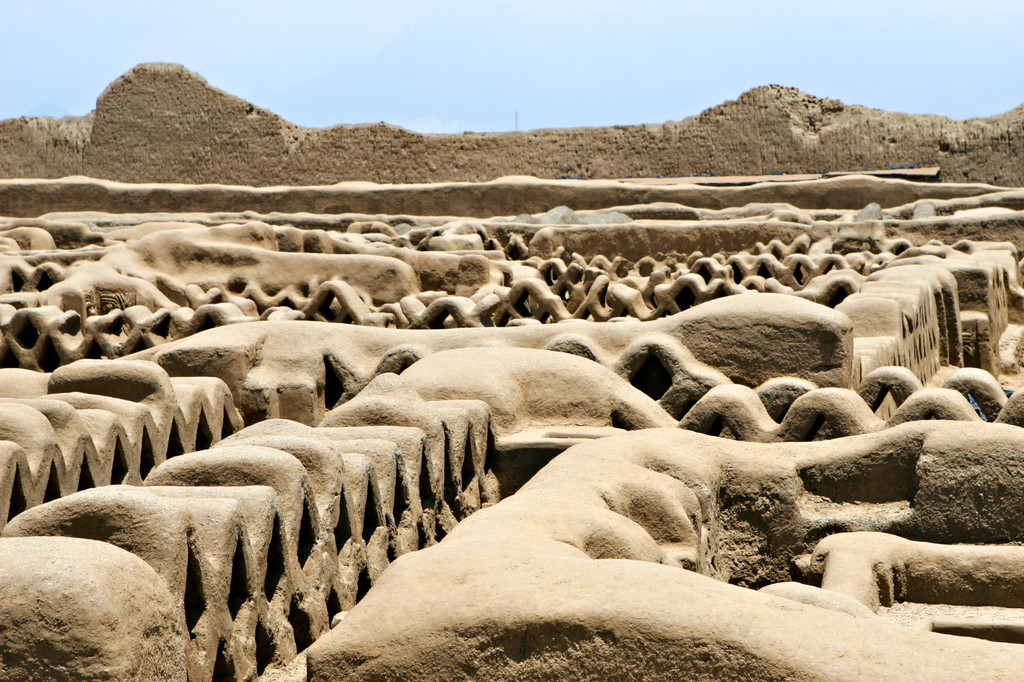
Many people aren’t familiar with the Pre-Inca civilizations of Peru. One of those was the Chimu, a coastal empire that built what was once the largest city in the Americas. The Chimu resisted the Inca conquest for years, holding strong at their capital city of Chan Chan. These ruins, dated back to the 9th century, are far different from the stone monoliths that have become synonymous with pre-colonial Peru, instead being sculpted out of adobe.
Experience the Paramount Views at Laguna Paron
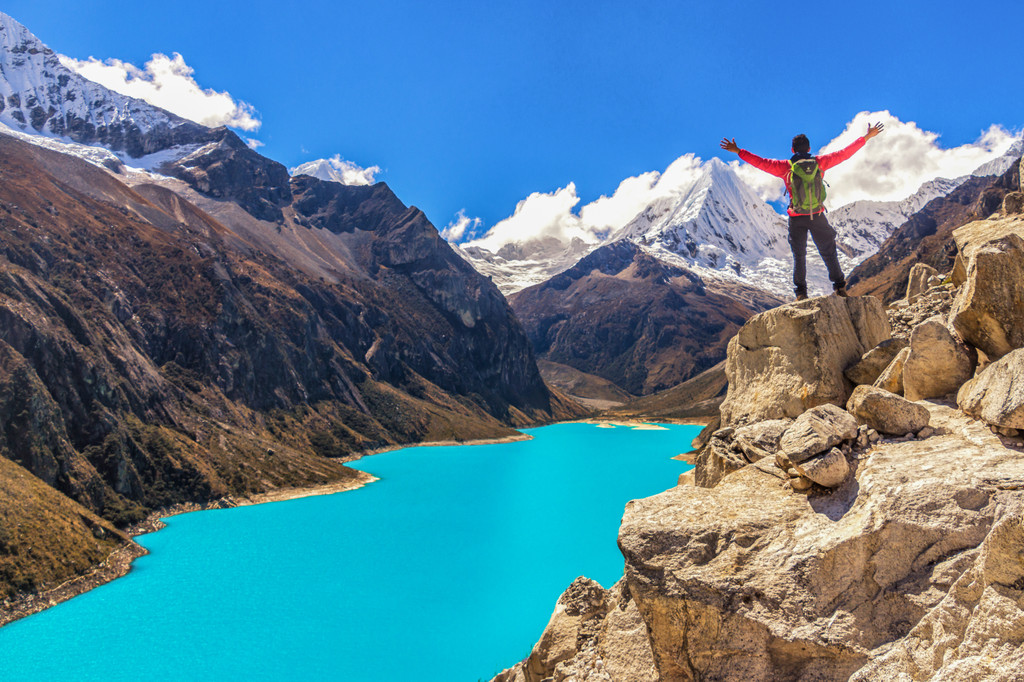
Laguna Paron is one of those places that looks like a poorly-edited Instagram photo. I mean, who would believe the water actually looks like that? It looks like the Blue Gatorade factory had a bad spill high in the Andes. It is very much real though, and pretty dang mesmerizing to look at. On a clear day, the gorgeous Artesonraju juts into the skies, inspiring many a traveler, and according to local legend, inspiring the Paramount Pictures logo designers as well.
Huff and Puff to the Sparkling Waters of Laguna 69

With views as memorable as its name, Laguna 69 is an iconic day trek. The laguna’s pristine glacial waters entice travelers from far and wide, although this treacherous high-altitude trek isn’t for the faint of heart. The trek is a challenging battle against the elements. With the increasingly thinning air, your lungs will be the first casualty. You might want to take a day off after this one and rest on your laurels before taking on another trek.
Camp Out In Huascaran National Park Along Sendero Santa Cruz
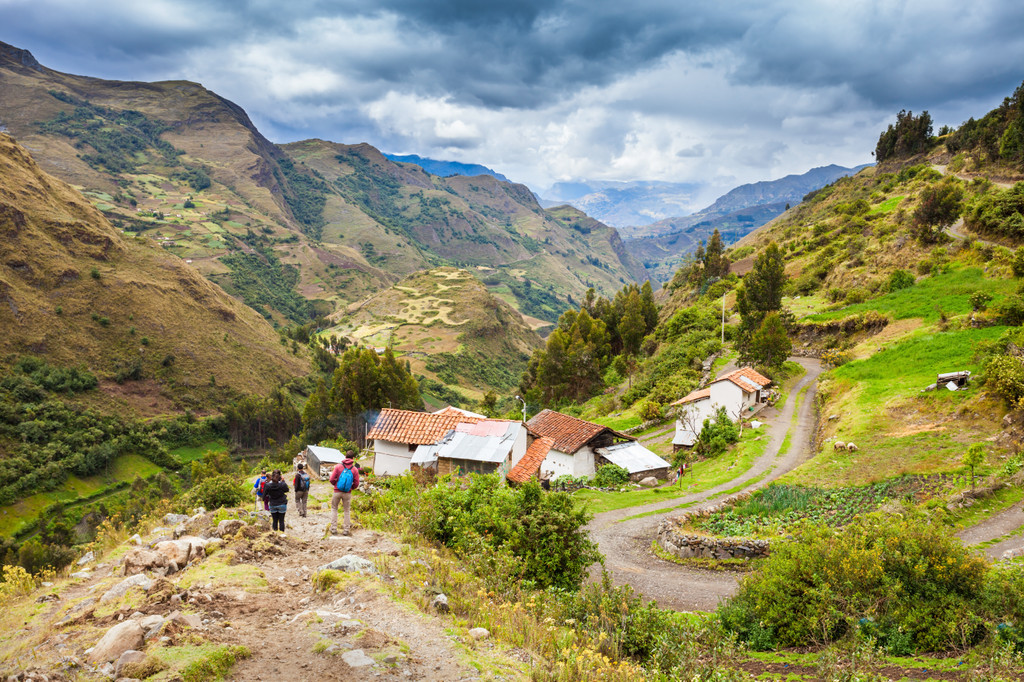
If the Cordillera Huayhuash seems too daunting, Santa Cruz is an excellent alternative. Santa Cruz takes you into the heart of Parque Nacional Huascaran. The 3-4 day trek can be easily done without a guide, allowing you all the freedom in the world amidst the Cordillera Blanca. Battling the thin air up to the 4,750 meter high mountain pass of Punta Union is met with a panoramic reward unlike any other.
You’re Not Tired of Mountains Yet, Are You? Here’s Laguna Churup

One might never get enough of the glacial lagunas and snow-capped peaks of the Andes. With mystical multi-colored waters and the majestic Mount Churup as its backdrop, even the bluest of travelers will be sure to Chur-up when they visit. Get it? Like cheer up? My trek mates were wheezing for air when I told that joke, although that could have just been the altitude.
Travel Back in Time at Chavin de Huantar

One of the earliest civilizations to settle in Peru were the Chavin people. The Incan Empire reached its peak in the 15th century. The Chavin? You’d have to go back an additional 4000 years. It’s difficult to even fathom, and a trip to this lesser-known UNESCO World Heritage Site is a mind-boggling and spiritual experience.
Cool Off at Pastoruri, One of the Last Tropical Glaciers in South America

If you’ve never seen a glacier before, you’re in for a treat. At 5,000 meters above sea level, Pastoruri Glacier won’t be the only thing taking your breath away. The Cordillera Blanca has the world’s highest concentration of tropical glaciers, and Pastoruri is the most easily accessible of the over 400 in the area. The short hike only takes about an hour, and the desolate landscapes and harsh mountain environment make for a surreal experience.
Conquer The Grueling Cordillera Huayhuash Circuit

140 kilometers of high-altitude trekking through the remote Peruvian Andes. Need I say more? The Cordillera Huayhuash circuit draws adventurers from far and wide to the mountain town of Huaraz, only to take another six hour drive deep into the mountains before setting off. From there, it’s anything but smooth sailing. Conquering mountain passes of over 5,000 meters, sometimes twice a day, is the price you’ll have to pay for the unfiltered mountain air and quite literally, breathtaking scenery.
Marvel At The Sparkling Turquoise Waters of Millpu

With shimmering shades of turquoise and aquamarine, the Aguas Turquesas de Millpu are a literal hidden gem. Its waters have yet to make a splash as an international destination, and its remote location 12 hours from both Lima and Cusco makes it very far off the beaten path. The best time to visit Millpu is during the dry season from May to November, otherwise the stunning turquoise waters become muddied and admittedly less enchanting.
Some Place Called Machu Picchu?

Not much needs to be said about Peru’s most famous bucket list destination. No matter how popular it has become, Machu Picchu just can’t be ignored. Just be prepared for a leg workout and a full memory card. Be sure to try and reserve a spot to be one of the handful of tourists allowed to hike Huayna Picchu.
Unashamedly Enter A Food Coma

The gastronomy of Peru is world-renowned, and no other place in Peru does food as well as Lima. The finest restaurants of Peru can be found in its coastal capital. Peru’s history, and therefore food, has intertwined with various cultures, from the Spanish to the Japanese. In other words, Peruvian food is uniquely delicious. Make sure to stop by at one of the many amazing all-you-can-eat Nikkei sushi restaurants in Miraflores for a taste of the Japanese-Peruvian love story —we like KO Asian Kitchen.
Explore Lima’s Street Art District of Barranco

A walk along Lima’s oceanside cliffs will eventually lead to the city’s cultural capital, the Bohemian district of Barranco. Vegan restaurants, quaint cafes, and stunning murals in every direction make Barranco the perfect place for a laid-back day of exploring. It’s a stark contrast to the chaos of Lima, and likely a very welcome change.
Drop By Islas Ballestas to See the Penguins and Sea Lions
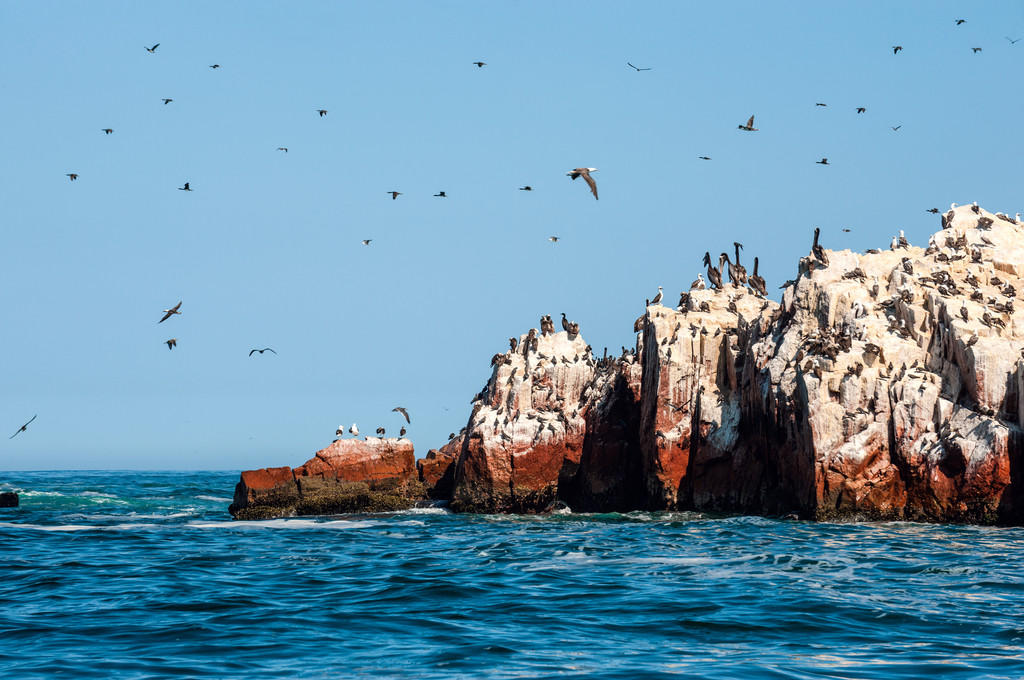
A day trip to Islas Ballestas will only run you about $15, making “The Poor Man’s Galapagos” a very appropriate nickname. Humans aren’t allowed on the islands, aside from the bird poop harvesters, of course. Once you smell the islands, you won’t want to get on anyway. Just stick to a safe distance and admire the sea lions and the Humboldt penguins, the only species of penguin native to Peru.
Scarf Down Ceviche By the Sea

With origins dating as far back as 2,000 years ago, ceviche is Peru’s quintessential dish. The best places to eat fresh ceviche are along the coast in cities like Chiclayo, Trujillo, and Lima. However, if you want some laid-back beach vibes to go with your meal, just go for a stroll along Paracas’ Malecon El Chaco boardwalk around lunchtime. No doubt you’ll find a Ceviche and Arroz de Mariscos combo for $5, Pisco sour included.
Cycle Along Lunar Landscapes at Paracas National Reserve
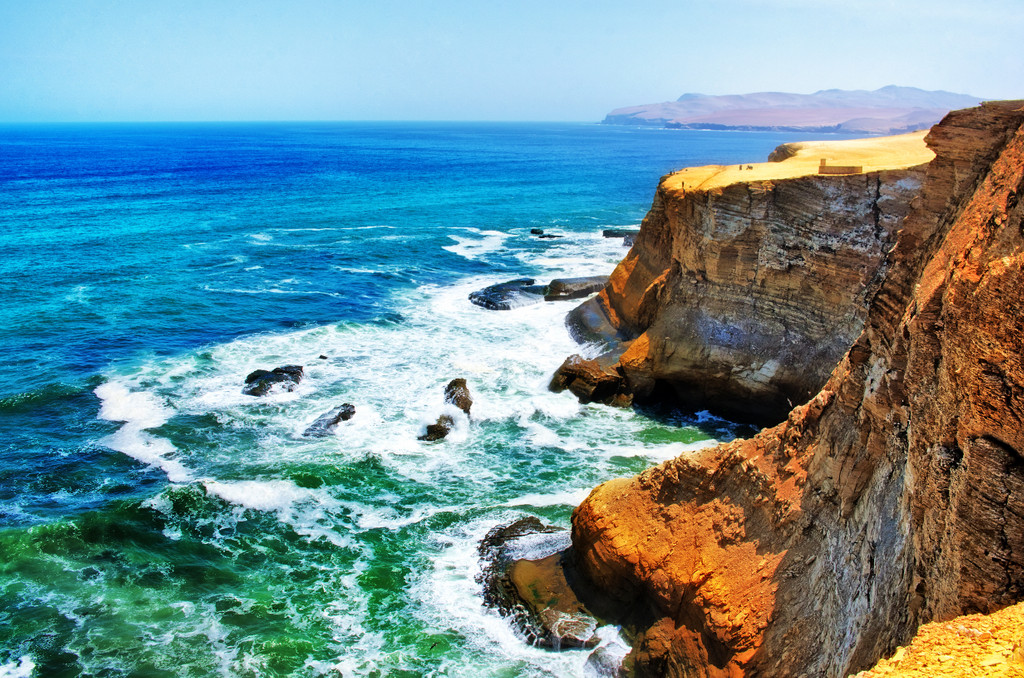
You’ve surely noticed by now that Peru is no stranger to otherworldly beauty. Just outside of the small beach town of Paracas is a national reserve where you could get lost in the vast expanses of Mars and the Moon. Paracas is where the harsh desert meets the violent ocean, making it a can’t-miss destination on any trip to Peru. Rent a bike and chase those views.
Surf the Dunes at Huacachina’s Desert Oasis
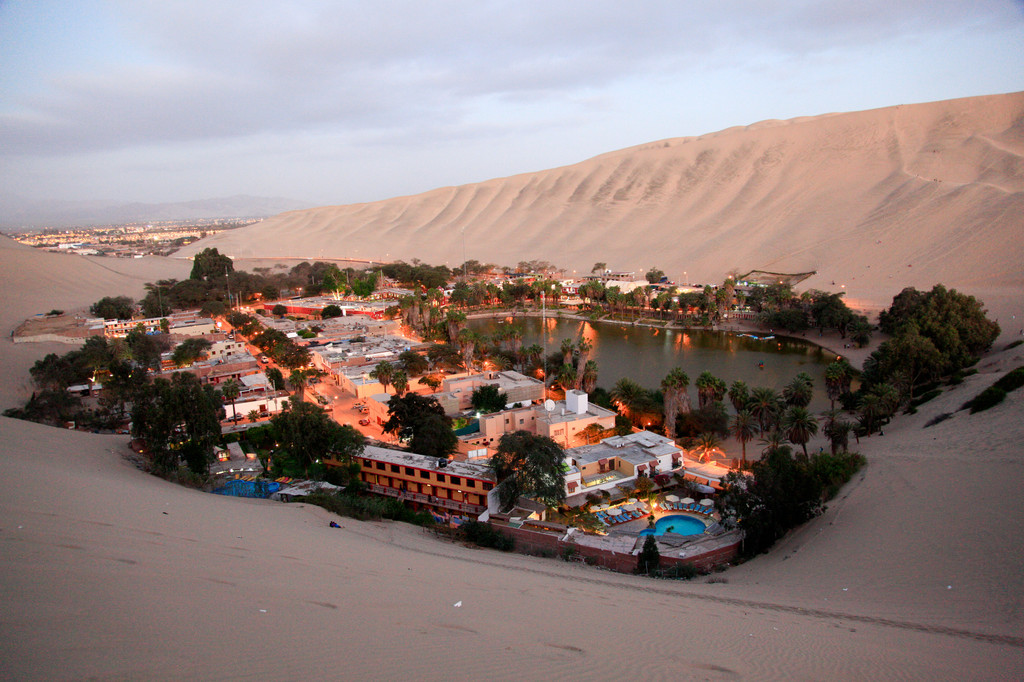
Strap on your board and get ready to send dunes. The famed jewel of Huacachina, Peru, is no longer the hidden gem that it once was, but that hardly takes away from the marvel. Spend the day on a dune buggy and a sand board then cap it off with a golden hour hike up the dune for one of Peru’s most memorable sunset views. No day in Huacachina is complete without cracking open a few Cusquenas and watching the waning sun transform the golden sandscapes of the desert.
Get Muy Borracho at an All-You-Can-Drink Pisco Tasting

Pisco is the national liquor of Peru, and a frothy pisco sour is the drink of choice for many Peruvians. Learn to trust the locals, and it’ll quickly become yours as well. The small town of Pisco, where the drink originates from, is located in Ica District, close to Paracas and Huacachina. Once you’re all sandboarded out in Huacachina, pop on over for a tour of a pisco vineyard. Most come with a generous all-you-can-drink pisco tasting at the end.
Fly Over The Mysterious Nazca Lines

Aliens? Aliens. Little is known about the Nazca Civilization or the most famous remnants they left behind. These 2000 year-old petroglyphs have attracted curious travelers from far and wide, becoming Peru’s most famous icons and one of the most mysterious places on Earth. While the $100 flight might seem steep for a 20-minute ride, there’s nothing like the Nazca Lines anywhere else in the world.
Weave With the Artisans of Chinchero

The tiny village of Chinchero is easy to overlook. Don’t. Not only does it have an impressive archaeological site and cute colonial city center, it’s got what you’ll need most: souvenirs. You’re no stranger by now to the signature alpaca jumpers of Peru. The talented artisans of Chinchero are more than happy to show you how that apparel is made, from the natural dyes they use to the weaving processes. It’s a great experience, and your money goes straight into the pockets of who deserve it most.
Choquequirao: Hard To Say, Even Harder To Reach

While nearly every major archaeological site in Peru has been made accessible, Choquequirao remains distantly off the beaten path. A trek to Choquequirao takes at least four days of deep trekking through the Peruvian jungles and mountains, and that’s the only way to get there. No tourist buses or cable cars, making it a one-of-a-kind destination that you have to earn to see.
Relive the Last Stand of the Incas at Ollantaytambo Fortress
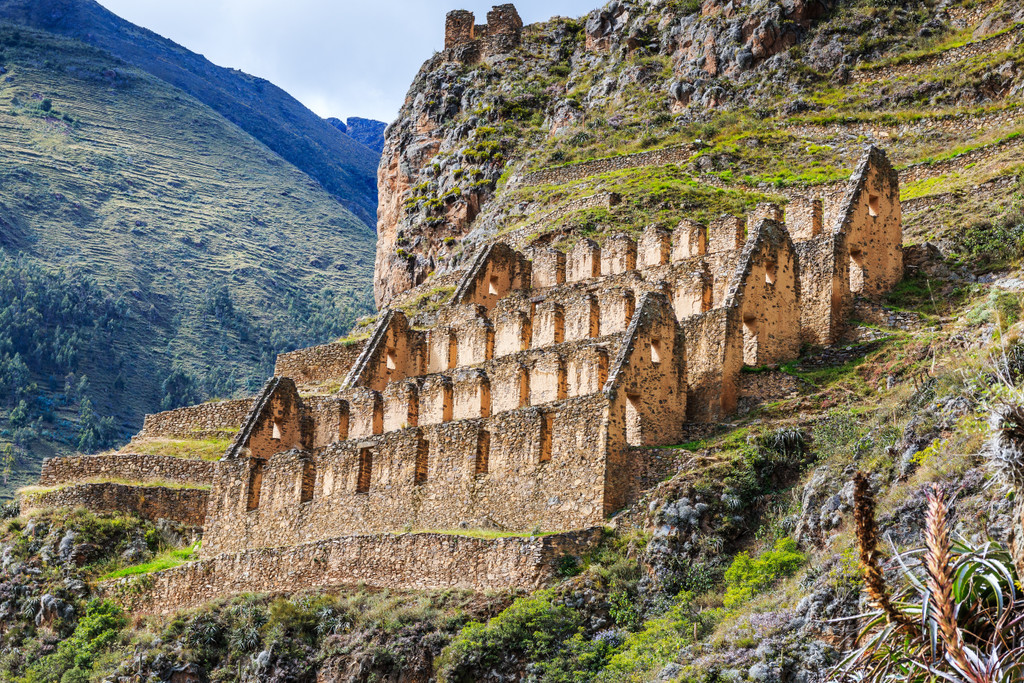
Visible right as you pull into town, the imposing mountain fortress doesn’t just look impenetrable, it is impenetrable. During the Spanish conquest of the Incas, the vastly superior weaponry of the Spanish made it pretty much a cakewalk. However, Manco Inca held serve at Ollantaytambo, making it one of the only battles the Inca ever won. Today, the fortress remains one of the most impressive pieces of architecture in all of South America.
Meander Through The Endless Salt Pools at Salineras de Maras

Salt as far as the eye can see. The salt pools of Maras built into the slopes of the Sacred Valley are a marvel to behold. A visit to these unique salt mines shouldn’t take more than an hour, so make sure to pop over to the archaeological site of Moray afterwards to round out another great day in the Valle Sagrado.
Earn Your Machu Picchu Photoshoot via the Salkantay Trek

There are a number of different routes to take up to glorious Machu Picchu. The Inca Trail is the most famous… and most expensive. The most popular alternative for travelers without the money or the foresight to book the Inca Trail months in advance would be the Salkantay Trek. Through cloud forests and snowy mountain passes, this trek to Machu Picchu makes the journey just as epic as its destination.
Shop Really Local At Mercado San Pedro in Cusco

The pungent smell of ceviche, the colorful sweaters draped over every storefront, dozens of women simultaneously calling you beautiful to lure you to their juice stands… Yep, you’ve made it to the sensory overload of Mercado San Pedro. It’s a one-stop shop. Get your hiking gear, lunch, and hey, how about a bag of drugs to top it off? Psychedelic medicine has a big role in Peruvian culture, so you can literally buy a goofy alpaca hat from one store and some ayahuasca from the sweet lady the next stall over. Welcome to Peru.
Aimlessly Wander All Throughout Cusco

Cusco is the cultural heart of Peru. Alpacas roam the alleyways while Quechua women in their bright traditional garb brighten up the off-white, half-peeled paint of the Cusquena houses. Few cities reward the aimless wanderer quite like Cusco does. Outside of the main city center, the San Blas neighborhood is perfect for getting lost amidst the side streets and stairways as you find yourself surrounded by snowy summits. A hike up to the Inca fortress of Saqsaywaman – yes, pronounced sexy woman – is what Cusco is all about, stunning views and awe-inspiring history.
Kick Back and Relax in Pisac

Just an hour from the hustle and bustle of Cusco, one can find a serene change of pace in Pisac. While popular among travelers as a day trip, it’s worth spending several days just relaxing while surrounded by the gorgeous scenery of the Sacred Valley. Peru’s Pisac market is also home to one of the best indigenous markets in all of Peru, and arguably the best archaeological site outside of Machu Picchu.
Explore Icela – I mean, Laguna Kinsa Cocha

Think you’ve seen it all? Think again. Laguna Kinsa Cocha boasts landscapes you’d expect to find in the harsh tundras of Scandinavia, and you don’t need to travel far from Cusco to see it. The undulating hike around Kinsa Cocha, Quechua for Three Lakes, is otherworldly. One can easily forget what country they were in, were it not for the flocks of alpacas frolicking freely.
Take a day trip to the breathtaking Rainbow Mountains of Peru

The cascading colors of Vinicunca’s Rainbow Mountain have captivated travelers and flooded Instagram feeds, but nothing compares to seeing it in real life. The challenging hike provides gorgeous scenery that is what Peruvians would say were vale la pena. Oh, and it’s not even the only Rainbow Mountain in Peru. What if I told you there was an alternative to the crowds of Vinicunca just a few hours away? At Palccoyo, there are not one, but three rainbow mountains that await. Move over Vinicunca, Palccoyo’s the new rainbow mountain in town.
Trek In One Of The World’s Deepest Canyons

Peru is like that over-achieving cousin that your parents always compare you to. Everything Peru does, it excels at. Take Colca Canyon, for example. It’s not just any canyon, it’s the freakin’ second deepest canyon in the world. Talk about competitive. A trek through Colca Canyon is a surreal experience, flanked by sheer thousand-foot canyon walls at all times. Condor sightings are not uncommon, and the chance to view one of the world’s largest birds in the wild is yet another reason to visit.
Visit Ruta del Sillar’s Sculptures of Volcanic Stone
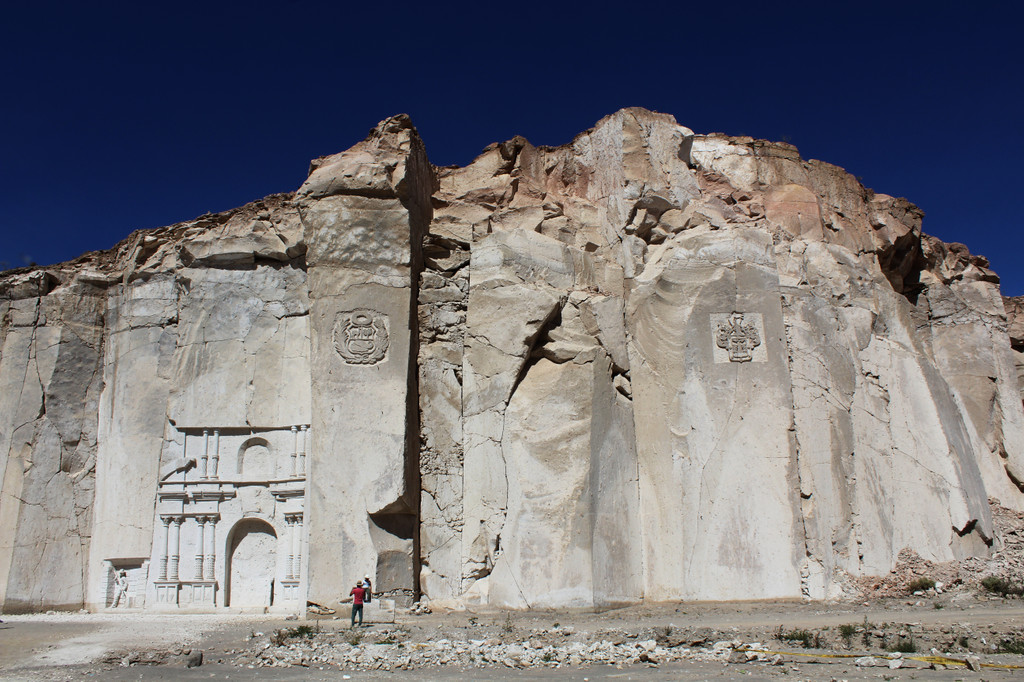
Arequipa is known as the White City due to many of its buildings being built from the white volcanic stone known as Sillar. Its main plaza is one of the most uniquely beautiful in Peru for this reason. A Ruta del Sillar tour will give you a background of and an in-depth view of how the City of White came to be, as well as provide some rad photo opportunities at Arequipa’s mini-Petra.
Build Your Own Island On Lake Titicaca

Peru’s indigenous cultures are among the most intriguing in the world. The Uros and their man-made islands in particular stand out. A ride across Lake Titicaca will take you to one of the Uru islands where you can learn all sorts of things, including how to build your own floating island out of reeds and dirt. Of course, even these remote corners of the world aren’t immune to modernization. The straw houses are equipped with solar panels, and you’ll likely be serenaded with “Row Row Row Your Boat” as you float gently down the stream back to the mainland.